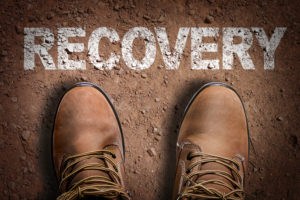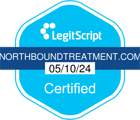Alprazolam, better known as its brand name Xanax, is a benzodiazepine that’s widely prescribed to treat anxiety and panic disorder. It’s also been characteristically misused with an increasing number over overdoses, particularly in teens, in recent years. A study published by the American Psychiatric Association at the end of 2018 claimed over 12 percent of adults used benzodiazepines in the past year, an increase from previous reports. Of this number, misuse of this category of drugs accounted for over 17 percent.
Since Xanax and other benzos are regularly prescribed and used to alleviate tension and help with panic attacks, people may use it without a prescription or in a way other than prescribed. As per an online article by U.S. News & World Report, child and teen overdoses caused by benzos, such Xanax, Valium, and Ativan, have risen by 54% from 2000 to 2015. Why?
Prescriptions for these anti-anxiety medications have increased over the past decade and reports show that four out of five teenagers take benzos with other substances, such as alcohol or opioids. Due to the increased anxiety both teenagers and adults face in today’s world, coupled with the availability of benzos as a “quick fix” to reduce these feelings, it creates more openings for drug dependency on highly addictive drugs.
Experiencing Withdrawal Symptoms Based on the Half-Life of Benzos
Once a person becomes addicted to benzos, withdrawal symptoms manifest when the drugs are no longer present in the body. Either a person relapses and continues use or go forward with the detox phase. How long does a detox from benzos take? A complete detox process usually lasts between 10 and 14 days. This is determined by a person’s level of drug use. A high frequency and amount used over a longer period of time often prolongs the detox timeline.
The half-life of the drug also determines when withdrawal symptoms begin as well. As the drug is eliminated from the body, the body has to adapt to functioning without it. Xanax, for example, has an intermediate half-life with withdrawal symptoms starting as soon as six hours after the last dose. For drugs with a longer-half life, such as Klonopin or Valium, it may take up to 48 hours for withdrawal symptoms to appear.
Withdrawal symptoms range in intensity and frequency and may include:
- Body weakness, aches, and pains
- Blurred vision
- Restlessness and irritability
- Racing heart
- Muscle tension
- Tremors
- Nausea
- Sweating
Abrupt withdrawal may also involve hallucinations or seizures. These types of intense reactions are unpredictable, which means the detox process shouldn’t be experienced alone. It’s safer to go through withdrawal under the supervision of a medically-managed facility with therapists who will monitor symptoms and help to alleviate pain and discomfort as much as possible. In the final days of the benzo detox timeline, the return of anxiety symptoms may persist until a treatment plan is instituted.
Detox is only the first step of a full treatment plan. Part of successful detox strategies include medication-assisted treatments, individual and group counseling, drug and alcohol addiction, and peer support. Medicated-assisted treatment is an integration of anti-craving prescription medication with behavior therapy programs to help clients discontinue use and prevent relapse in a safe way. The main purpose is to normalize central nervous system functionality and help to alleviate the effect of other substances commonly used with benzos, like alcohol and opioids.
The next phase is residential treatment, followed by outpatient care, and outbound services. Each phase is equally important to healing because it allows a person to learn more about addiction, work through triggers and underlying areas of concern, and implement techniques and methods to prevent drug use in the future as a way to cope.
Entering the Second Phase of Care with Residential Treatment
Once the body and mind are in a healthier and clearer state, the next stage of healing through residential treatment can begin. It requires a temporary stay at an addiction treatment facility with a recommended minimum period of four months. This phase includes individual and group therapy, educational programs, and peer-to-peer interaction, as well as daily meditation, exercise, meal time, and free hours.
When a person enters the residential program at Northbound, he or she is assigned to an interdisciplinary support team made up of six individuals, including an ASAM certified addiction psychiatrist, nationally certified and licensed primary therapist, licensed addiction counselor, in addition to a music therapist, trauma therapist, and academic advisor, as it pertains to your specific route of care. There are also gender-specific residential treatment programs to account for the variances in how co-occurring disorders and addiction impact males and females during recovery.
Although there are guidelines in place as part of the full continuum of care, each person has a treatment plan customized to their needs. Established goals and progress toward those goals are what help define the timeline and alter treatment as needed. There is no standard route of care applied across the board; it is driven by the individual.
Continuing the Healing Process with Intensive Outpatient Care
Outpatient care involves the same areas and structure of treatment as residential care but with flexibility that adheres to real-life scheduling. During this stage, a person is living substance-free in a sober living environment that’s supportive of their healing. Individuals are expected to engage in the intensive outpatient program between six to twelve hours a week based on their continuing treatment plan.
Often, this phase of care immediately follows a residential treatment stay, but some seek this as a way to prevent relapse or as an initial intervention to prevent addiction. The outpatient program continues to support healing as people begin the transition back to their real-life environments. This continuation of care is another step in helping people reach the milestone of one year of continuous sobriety.
One of the most essential points of addiction treatment is discharge planning. This outlines the transition from intensive programs of the previous months to having the tools to maintain sobriety on their own. Once residential and outpatient treatment is complete, there are a number of addiction support services to further provide counseling and mentoring, as well as engagement with support groups to help people maintain sobriety following rehab.
Signs of Benzo Abuse: Is a Medical Detox Necessary?
Despite using benzos as a prescription medication, they require specific dosage instructions as well as guidelines to taper off safely. However, due to their highly addictive nature, a person can build a dependency on the drug without realizing it.
Benzos work by slowing the central nervous system to introduce feelings of calm and relaxation. The side effects may go beyond these sedated feelings and result in:
- Drowsiness
- Blurred vision
- Poor coordination
- Amnesia
- Irritability
- Confusion
- Disturbing dreams
When a person frequently experiences these symptoms or experiences them at a greater rate, these may be signs of abuse. Also, if a person uses benzos with alcohol and/or opioids, this also signals benzo abuse. Finally, one of the most telling signs is overdose. Overdose occurs when a person takes too much, too frequently.
On the other hand, abrupt withdrawal is also dangerous as well and calls for supervised care. If you’re concerned about a friend or loved one, note any changes in behavior or signs of abuse and voice your concern. Addiction is a disease that takes over the brain’s normal functioning, including decision-making and reasoning, which makes it difficult to see it happening first-hand.
When to Seek Help from a Detox Treatment Facility
When it comes to benzodiazepines and detox, it’s never too soon to intervene if you’re concerned that someone you care about is forming an addiction or is already suffering an addiction to benzos. On the surface, this category of drugs don’t seem as dangerous as opioids, due to how often they’re prescribed, but the opposite may be true because of it. People may take them more often because they don’t associate as high of a risk as with other drugs.
Although it’s less common for people to use benzos like Xanax recreationally as a way to get high, they’re also not likely using them under the guidance of a medical provider. To them, it might be the short-term solution to relax for feelings of anxiety or bouts of insomnia, but the dangers of addiction are always one dose away.
Experiencing benzodiazepine withdrawal symptoms alone makes it challenging to detox successfully and safely. Seeking help from a medical detox program is beneficial for your physical and mental health. It also provides you emotional support that will help motivate you to continue with treatment. Each phase of care provides you the tools and methods to improve your physical and mental health without the need for drug use in the future. It also offers ways to handle temptations or setbacks in a safe way with support readily available to help you through more challenging times.
Finding support through an established addiction recovery facility gives you the opportunity to rebuild your life in a healthier, happier way. Detox itself is typically only a few weeks, but the treatment that follows is essential to maintain sobriety and healing.
Sources:
- Ait-Daoud, Nassima, et al. “A Review of Alprazolam Use, Misuse, and Withdrawal.” Journal of Addiction Medicine, U.S. National Library of Medicine, 2018, www.ncbi.nlm.nih.gov/pmc/articles/PMC5846112/;
- “More U.S. Teens Are Overdosing on Valium, Xanax.” U.S. News & World Report, U.S. News & World Report, Dec. 2019,
- Study Finds Increasing Use, and Misuse, of Benzodiazepines, American Psychiatric Association, 17 Dec. 2018, www.psychiatry.org/
- Publishing, Harvard Health. “Benzodiazepines (and the Alternatives).” Harvard Health, Mar. 2014, www.health.harvard.edu/
- Pétursson, H. “The Benzodiazepine Withdrawal Syndrome.” Addiction (Abingdon, England), U.S. National Library of Medicine, Nov. 1994, www.ncbi.nlm.nih.gov/pubmed/7841856
- “Alprazolam (Oral Route) Side Effects.” Mayo Clinic, Mayo Foundation for Medical Education and Research, 1 July 2020, www.mayoclinic.org/drugs-supplements/alprazolam-oral-route/side-effects/drg-20061040










